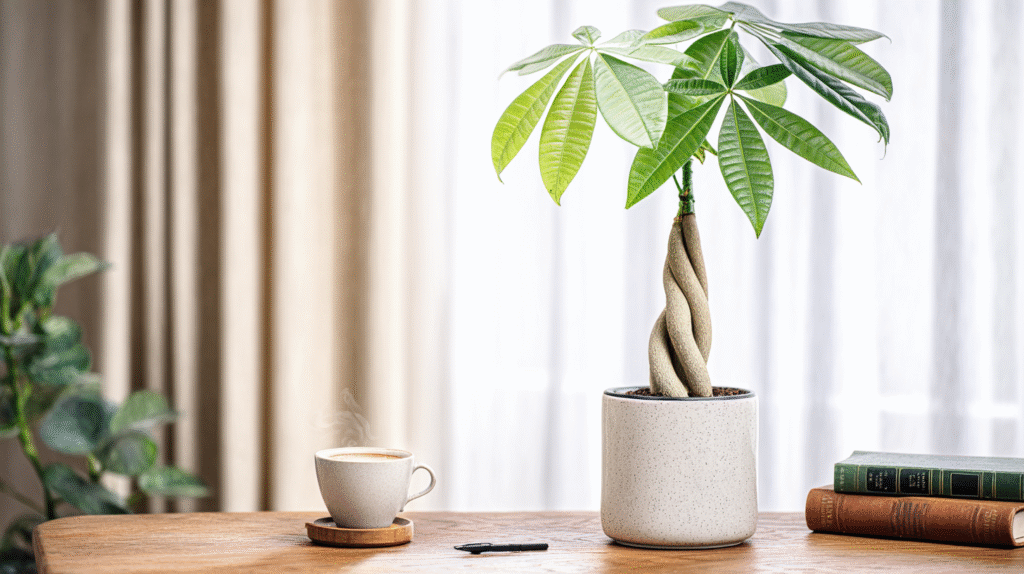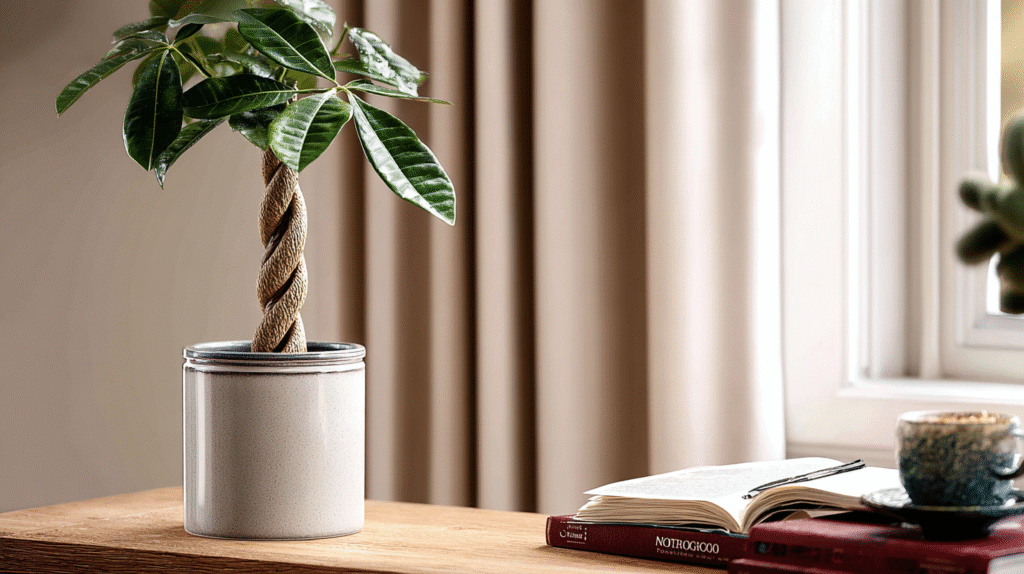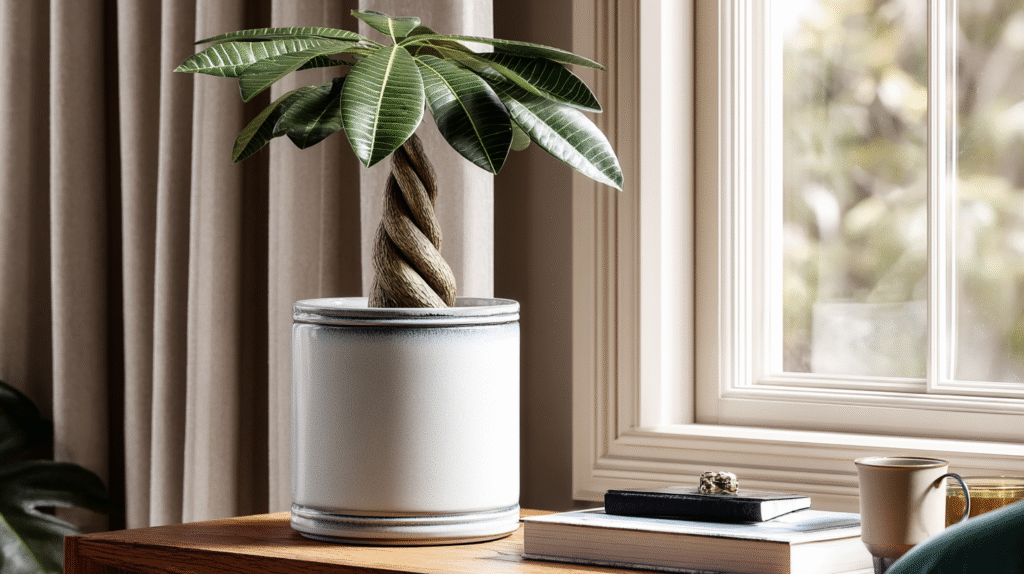Let me save you from making my $89 mistake. That’s what I paid for my first money tree at a fancy plant boutique – a half-dead Pachira aquatica with three yellowing leaves that croaked within a month. The kicker? I later found healthier ones for $15 at the grocery store.
After hunting for money trees in every possible spot over the past three years (and buying way too many), I’ve figured out where to find healthy ones without emptying your wallet. This isn’t some generic “check your local nursery” guide – this is the real deal on where to actually find money trees near you, what to look for, and what to run away from.
Why Finding the Right Money Tree Matters More Than You Think
Here’s what nobody tells you: where you buy your money tree can make or break your plant parent experience. That Instagram-worthy boutique plant? It might’ve been sitting in low light for weeks. The hardware store special? Could be root-bound and stressed.
I learned this after buying seven money trees from different places (yes, I have a problem). The difference between my thriving 5-footer and the ones that died wasn’t my care – it was their condition when I brought them home.
The Best Places to Actually Find Money Trees
1. Grocery Stores (Seriously)
My healthiest money tree came from Whole Foods. I’m not kidding. Grocery stores get frequent shipments, so plants are fresh. Plus, they’re cheaper because they’re not trying to be “plant destinations.”
Best grocery store finds:
- Trader Joe’s ($12-15, small but healthy)
- Whole Foods ($20-35, bigger sizes)
- Kroger/Safeway ($15-25, hit or miss)
- Wegmans (if you’re on the East Coast)
Pro tip: Tuesday-Thursday mornings are when most stores put out fresh plants. I’ve scored some beauties by shopping early midweek.
2. Home Improvement Stores
Home Depot and Lowe’s are goldmines if you know when to shop. But timing is everything – their plant sections can be amazing or absolute graveyards.
What I’ve learned:
- Check the delivery schedule (ask the garden center staff)
- Spring shipments are usually healthiest
- Look for Costa Farms tags – they’re a decent grower
- Prices range from $15-40 depending on size
- Skip any that have been there over two weeks
My current second-largest money tree? A $22 Lowe’s find that’s now taller than my nephew.
3. Local Garden Centers (Not Always Worth It)
Don’t get me wrong – some local nurseries are fantastic. But I’ve also paid premium prices for mediocre plants because I assumed “local = better.”
The good ones will:
- Know exactly when they got the plant
- Tell you where it was grown
- Have it in proper lighting
- Actually care for their inventory
Red flags:
- Can’t answer basic questions
- Plants crammed in dark corners
- Prices 3x higher than big box stores
- “We’ve had that one for a while”
4. Online… But Only If You Must
I’ve ordered money trees online exactly twice. Once was great, once was a disaster. The successful order came from a grower, not a reseller.
If going online:
- Order Monday-Tuesday (avoids weekend shipping delays)
- Pay extra for expedited shipping
- Only buy from actual growers
- Check recent reviews with photos
- Expect some shipping shock regardless
What to Look For (My Hard-Won Checklist)
After examining literally hundreds of money trees, here’s my inspection routine:
The Trunk Check:
- Firm and green = good
- Soft spots = run away
- Wrinkled = dehydrated but fixable
- Black areas = probably rot
Leaf Inspection:
- Dark green and perky = healthy
- Yellow edges = overwatered (might recover)
- Brown crispy edges = underwatered (easier fix)
- Dropping leaves in the store = hard pass
The Soil Situation:
- Should be slightly moist, not soaking
- No weird smell (root rot stinks)
- No fungus gnats flying around
- Not bone dry and pulling from pot edges
The Root Investigation:
- Gently tip the pot – roots showing is normal
- Massive root mat at the bottom = too root bound
- No roots visible at all = might be newly potted

Price Reality Check: What You Should Actually Pay
Let me break down realistic prices based on my extensive (obsessive) research:
Small (4-6 inch pot, 1-2 feet tall):
- Grocery stores: $10-20
- Big box stores: $15-25
- Nurseries: $20-40
- Online: $25-35 plus shipping
Medium (8-10 inch pot, 2-4 feet tall):
- Grocery stores: rarely available
- Big box stores: $30-50
- Nurseries: $45-80
- Online: $50-70 plus shipping
Large (12+ inch pot, 4+ feet tall):
- Big box stores: $60-100
- Nurseries: $100-200
- Online: Just don’t. Too risky.
That $89 boutique plant I mentioned? It was a small one. I’m still bitter.
Timing Your Hunt: When to Shop
Best months: March-May and September-October. This is when stores get their biggest shipments and plants haven’t been stressed by extreme temps.
Best days: Tuesday-Thursday. Monday’s plants might be weekend leftovers, Friday’s get picked over by weekend shoppers.
Best time: Morning, within 2 days of delivery. I once showed up as they were unloading and got first pick – game changer.
Worst times:
- December (overpriced “gift” plants)
- Mid-summer (heat-stressed shipments)
- End of season sales (unless you like projects)
My Biggest Money Tree Shopping Mistakes
The Boutique Trap:
Paid triple for a pretty pot and mediocre plant. The pot cracked, the plant died. Lesson learned.
The Rescue Mission:
Bought a half-dead clearance money tree thinking I could save it. Spent more on treatments than a healthy plant would’ve cost. It died anyway.
The Impulse Buy:
Grabbed one without inspecting because I was in a rush. Got home to find mealybugs. Had to quarantine and treat for weeks.
The Size Obsession:
Bought the biggest one without checking roots. It was so root-bound it never recovered from repotting shock.

Transport Tips That’ll Save Your New Plant
Lost a beautiful money tree to transport damage. Here’s how to avoid my mistake:
- Bring a box or crate (stores rarely have good ones)
- Secure the pot so it won’t tip
- Crack windows for air circulation
- Never leave it in a hot/cold car
- Transport straight home if possible
- Water lightly before moving if soil is bone dry
The Follow-Up: What to Do After You Buy
First 2 weeks are crucial. Here’s my new plant routine:
- Quarantine away from other plants (check for pests)
- Don’t repot immediately unless there’s rot
- Put in bright, indirect light
- Water only when top 2 inches are dry
- Don’t fertilize for at least a month
- Resist moving it around

Where NOT to Buy Money Trees
Learn from my failures:
- Facebook Marketplace (unless you can inspect first)
- Pop-up plant sales in parking lots
- Stores where plants sit by the entrance doors
- Anywhere they’re labeled just “tropical plant”
- End-of-season clearance (unless you’re experienced)
Final Thoughts: Finding Your Perfect Money Tree
After all my money tree hunting adventures, here’s what I know: the best plant isn’t the biggest, fanciest, or most expensive. It’s the healthy one you can actually find locally and transport home safely.
My favorite money tree? The $15 Trader Joe’s one that looked scraggly but had a solid trunk and healthy roots. Three years later, it’s my pride and joy.
Skip the boutique plant shops unless you like overpaying. Check your grocery stores first, hit up big box stores during fresh delivery days, and always – ALWAYS – inspect before you buy. Your future self (and wallet) will thank you.
Remember: a small healthy money tree beats a large struggling one every time. Start small, grow big, and enjoy the journey. Happy hunting! 🌱






